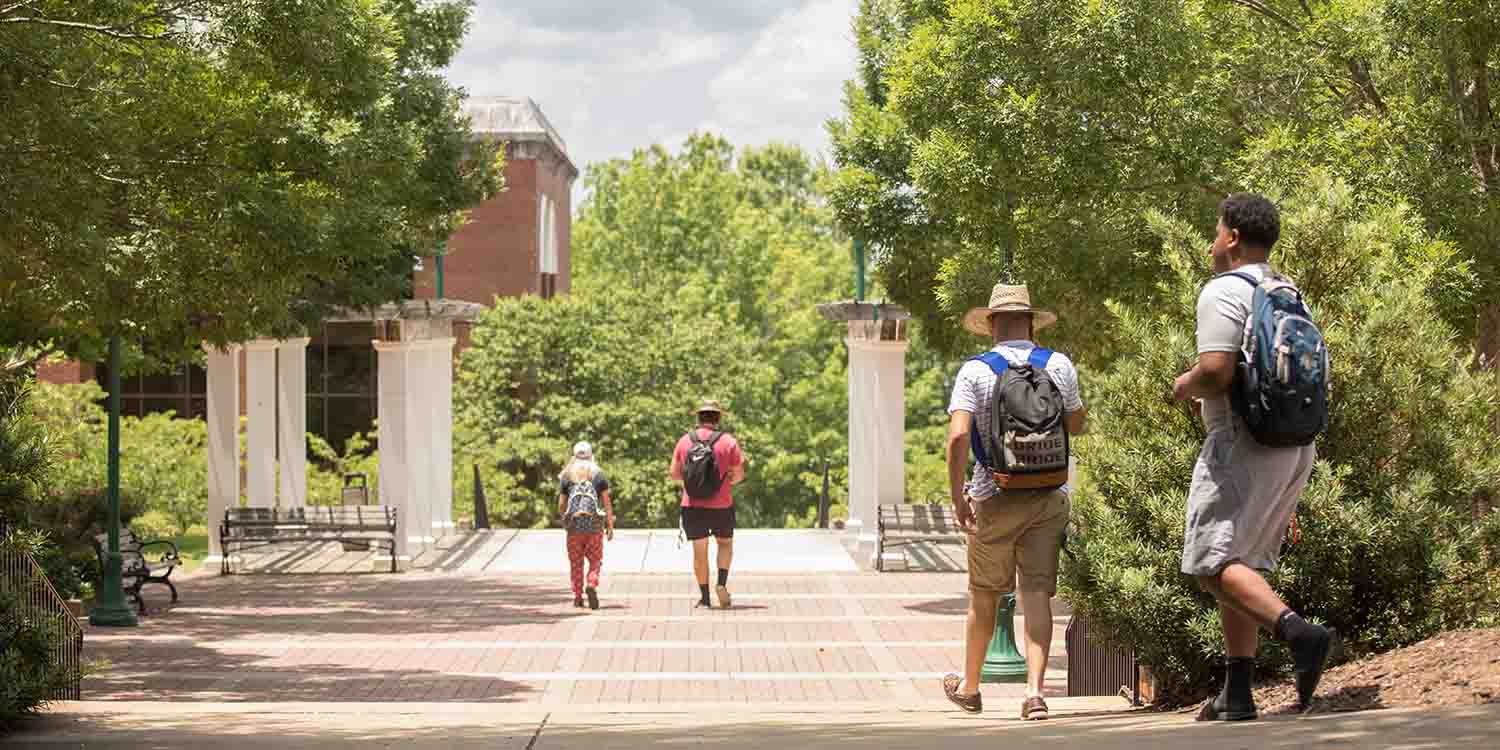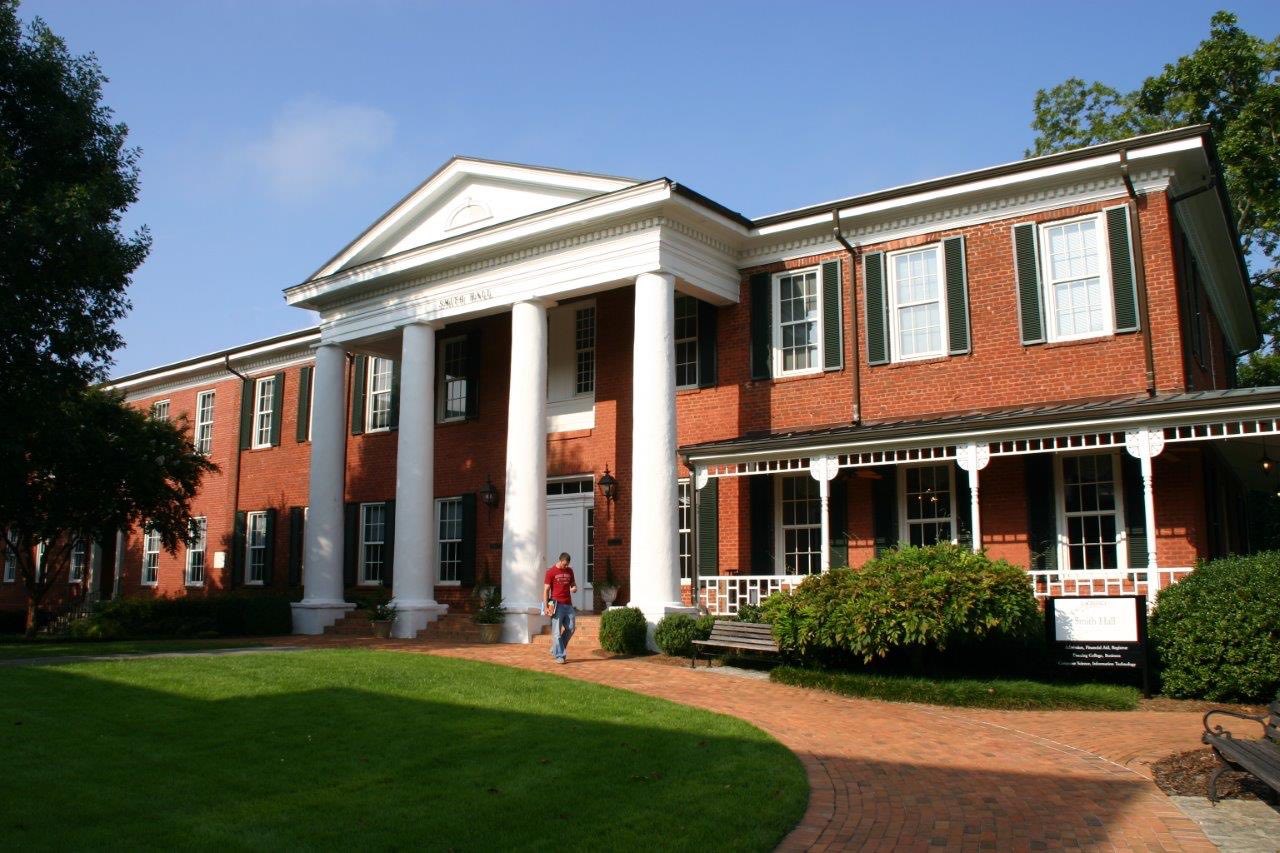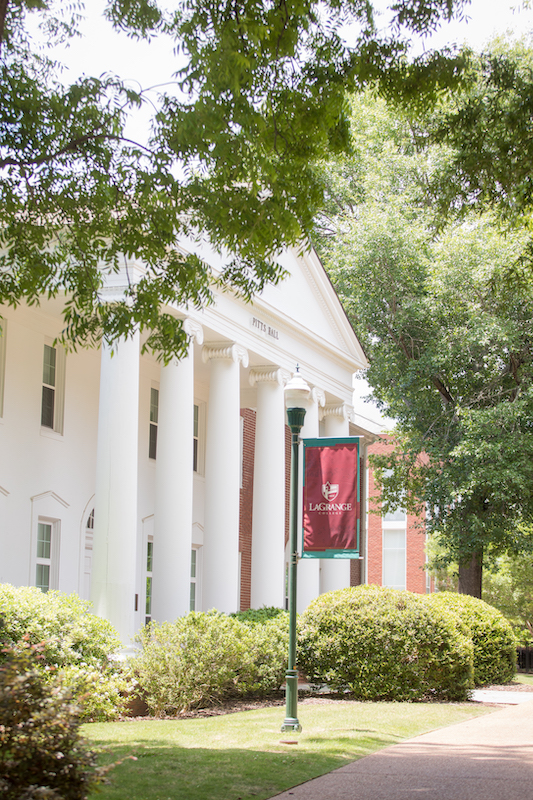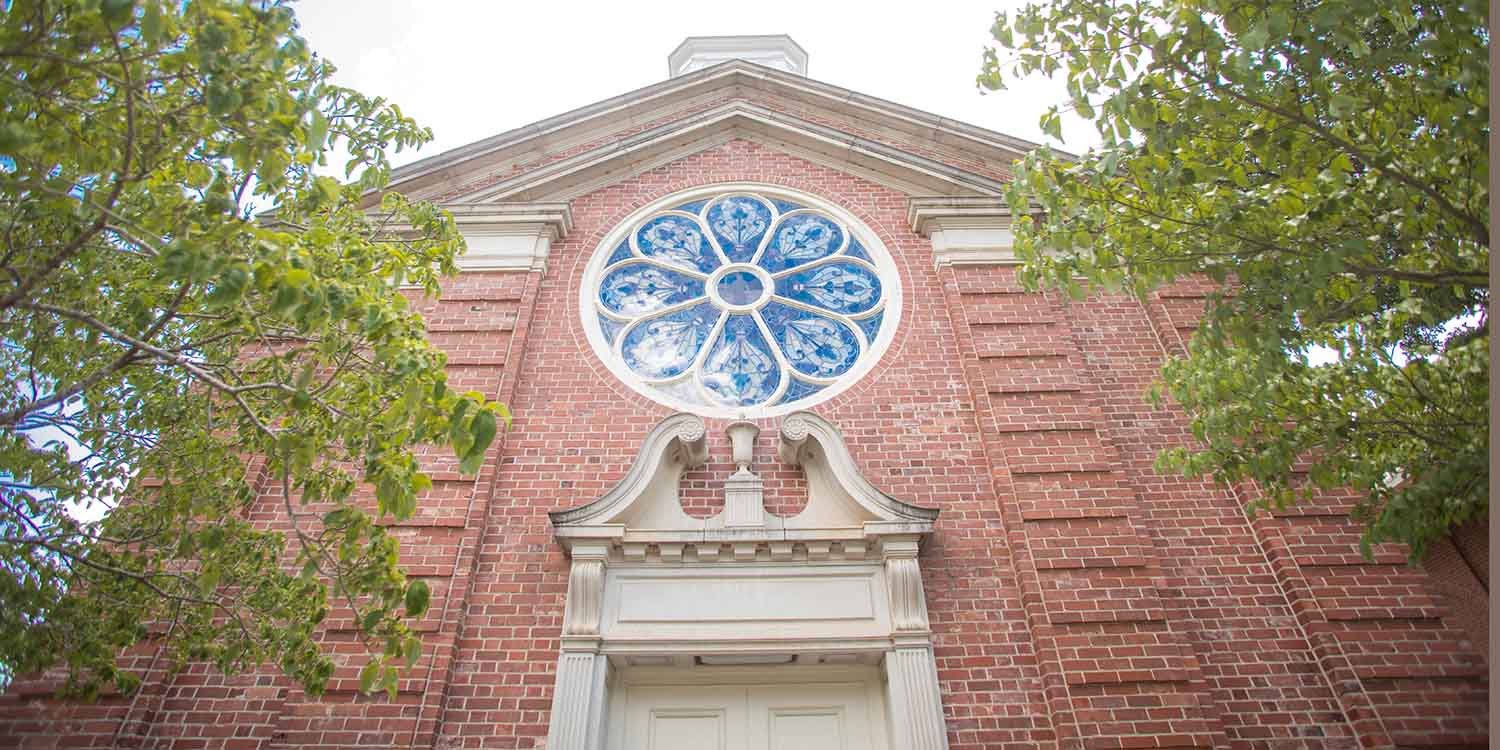From LaGrange Female Academy to LaGrange College
LaGrange College, the first private college in Georgia, is beautifully positioned on “College Hill”, now abbreviated to “The Hill”. The college is rich in history, having been chartered in December of 1831 and enduring wars, changes in leadership and an evolution of its student body.
The campus is a beautiful place to take a walk. You can take in the sight of buildings that hold so much history, and others that reflect the ever-evolving nature of the college and its hometown of LaGrange.
Even before its 1831 charter, the school began as LaGrange Female Academy, a high-school level school. Its original home was a large house down the street from the current campus. In 1847, it was renamed LaGrange Female Institute and was allowed to confer degrees. In 1851, it moved to its present location on “The Hill,” a four-year curriculum was adopted, and its named changed to LaGrange Female College.
While you may hear that the school’s first president was Thomas Stanley, in truth he was the third president. The very first president was a woman, Harriet Behnam, who served for the college’s first two years. After Thomas Stanley (a Methodist clergyman) died in office, his wife, Ellen Stanley, played a greater and longer-lasting role in the college establishment than her husband.
The Georgia Conference of the Methodist Episcopal Church South took ownership of the college in 1856. Today it is an institution of the North Georgia Conference of the United Methodist Church.
Several times, the college nearly went out of business. At one point, the school was merged with Southern Female College, whose campus had burned while it was being used as a Confederate hospital during the Civil War. When the president of Southern Female College decided he no longer wanted to run both schools, the trustees decided to shut down LaGrange College. Four women, who were then teaching at the college, negated the decision and refused to allow the school to close.
The school’s name changed once more to LaGrange College in 1934 and it began admitting males full-time in 1949. In 1953, the Board of Trustees voted to make the school officially co-ed with the offering of both male and female dorms.
One of the first students to attend the college was Eliza Frances Andrews, who lived from 1840-1931. She was a successful writer and botanist who refused to conform to the life of marriage and motherhood that was expected of her. She had aspirations for her own career and brought those dreams to life through her many published works. In 1926, she became the only American woman to become a member of the International Academy of Literature and Science.

Smith Hall
Smith Hall, also known as “College Home”, is the oldest building on Campus. The main portion of the building was constructed in 1860 from handmade bricks of local clay. Several additions occurred in the 1880s and 90s and a major renovation occurred in 1989. The final addition to the building was the Victorian-style porch that runs from the main portico and turns the corner to the North side of the building.

The original brickwork and columns were built by Ross Cameron, a mason who was born a slave and later became a freedman. He worked for the architect who built the building, Benjamin H. Cameron. The additions were primarily completed by George and John King, sons of Horace King.
It was named in memory of Mrs. Oreon Mann Smith, wife of the former college president Rufus Wright Smith, who served from 1885 to 1915.
During the Civil War, Smith Hall was seized by the Confederate government. From November 1863 to June 1864, it served as a hospital for soldiers wounded in the Civil War.
When you visit Smith Hall, look at the front of the building and see if you can find the seam where the two wings were joined together. You may also be able to find the spot where a balcony used to exist.
Hawkes Hall
Hawkes Hall, built in 1911, is the second oldest building on campus. It was built as a dormitory and housed the school library for a time. There was originally a three-tiered porch that ran the length of the building, which was later removed.
Hawkes Hall is named for Harriet Hawkes, mother of Albert King Hawkes. A.K. Hawkes was one of the major donors for the building and funded the building of several children’s libraries in Georgia (including the library in nearby West Point).
What would have been the second oldest building, Dobbs Auditorium, used to stand where the Fuller Callaway Building now stands. Dobbs was finished in 1877 and burned in 1970, after which the Fuller Callaway building was constructed.
Pitts Hall
Pitts Hall is a dormitory and is the third oldest building on campus. It was completed in 1940, just before World War II began. The college was fortunate to complete the building before the war began and construction resources were diverted to the war effort.

The Chapel
The LaGrange College Chapel has unique ties to ancient Greece, Scotland, and England. The Chapel exterior includes stones from the Temple of Apollo at Corinth and Saint George’s Chapel in Windsor. The Temple of Apollo at Corinth was erected around 540 B.C. Saint George’s Chapel in Windsor was built around 1348. The stones are located on either side of the chapel, with plaques providing more information about their origins.
The chapel also has a beautiful link to historic LaGrange and the Methodist Church, with which the college is still affiliated. The windows in the chapel came from the 1898 First Methodist Church in LaGrange. When the church was razed to make way for the new building, its windows were saved for use in the LaGrange College Chapel, designed by Ed Neal.

LaGrange College now has more than 1,000 students enrolled, representing 21 states and 5 foreign countries. The college, known for its offerings in drama, music, and art, has educated many people who became well known for their contributions to the arts.
To visit the campus, park in the lot at the corner of Broad Street and Park Avenue. You’ll find Smith Hall, Hawkes Hall, Pitts Hall, and the Chapel located near each other.
Enjoy your explorations of this beautiful campus, experiencing nearly 200 years of history from your vantage point on “The Hill”.